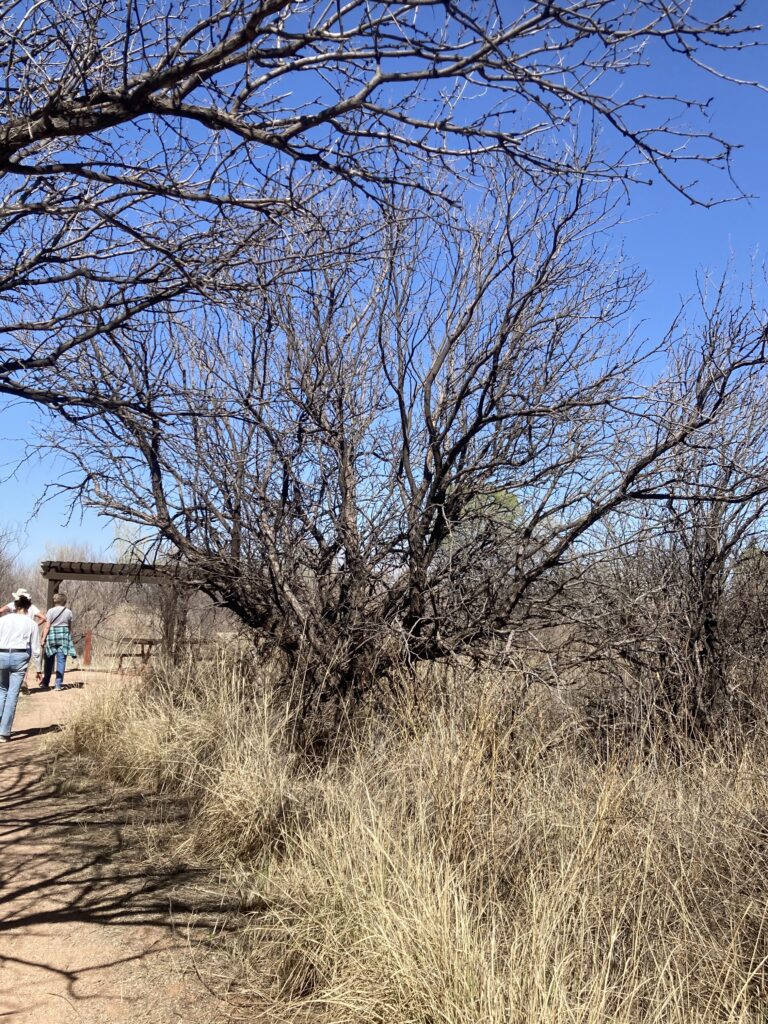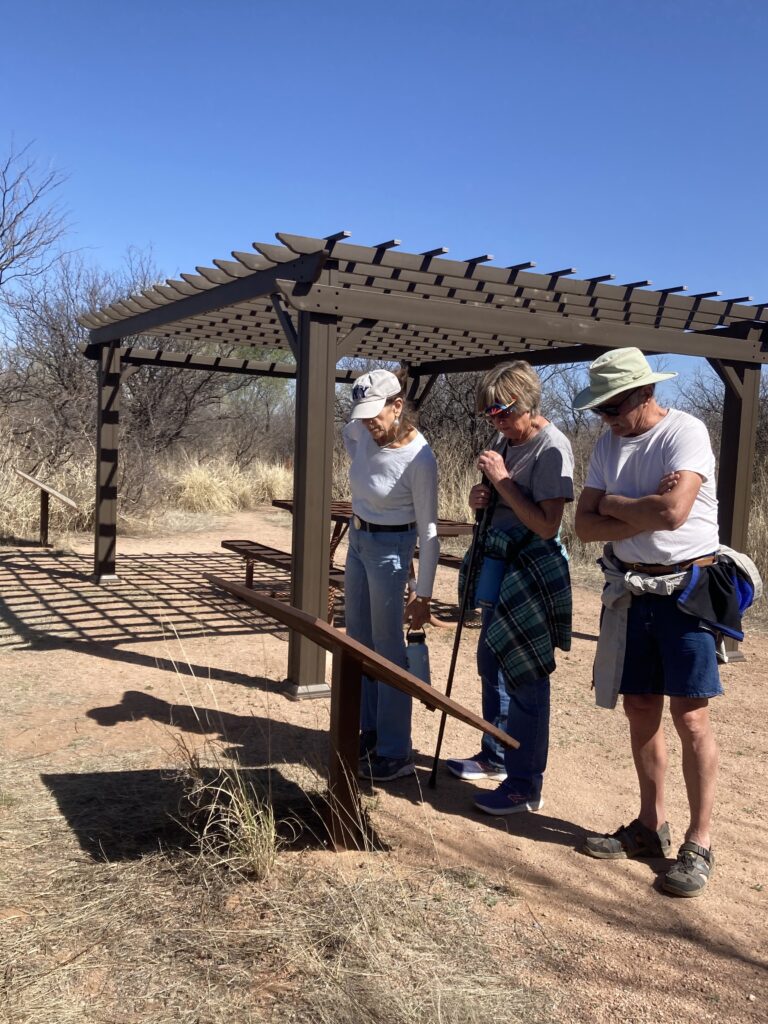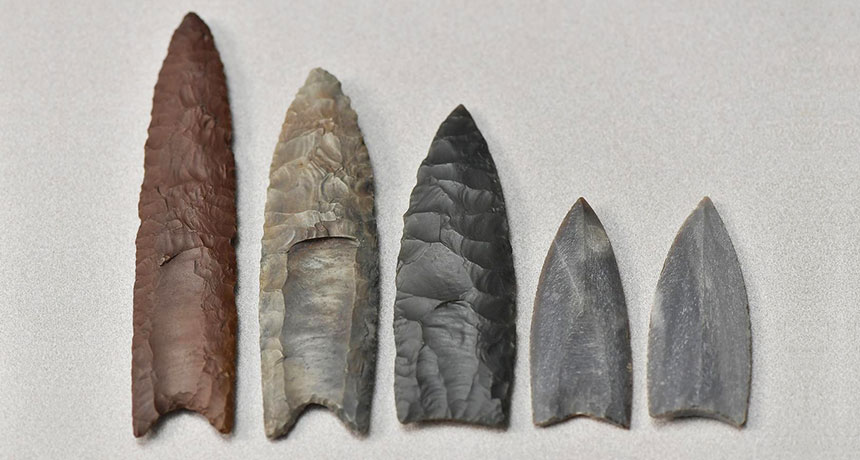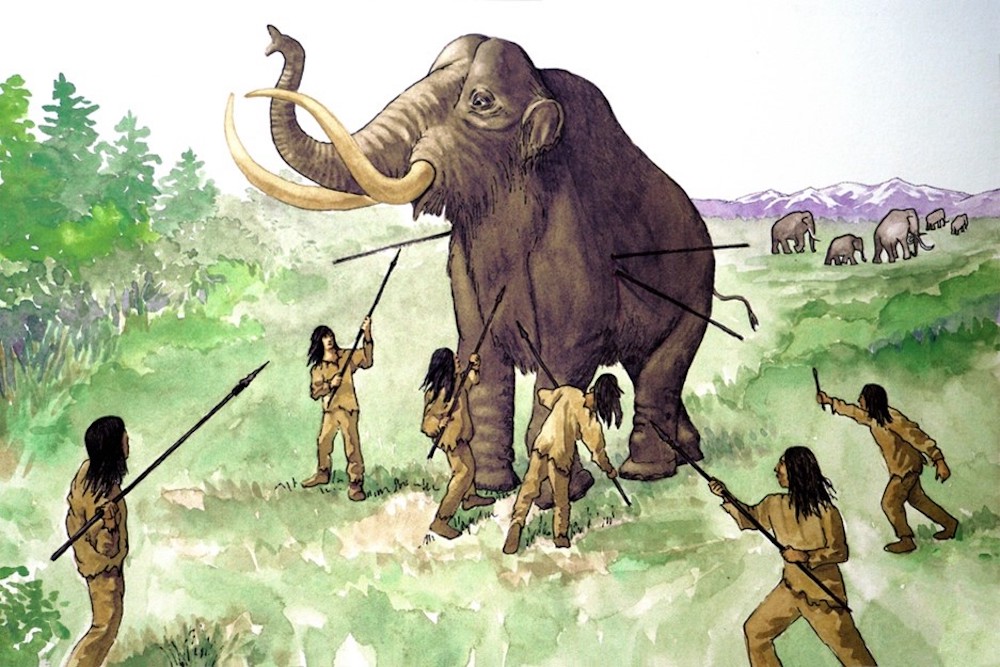First Nations Ancestry
WINs visit Murray Springs Clovis Site

Pat Schumaker led the Western Winter WINs on a trail to see the Murray Springs Clovis site. We learned that Clovis was the name given to a specific form of napped stone artefact in use by the earliest peoples on the North American continent between 12,000 and 13,000 years ago. The first example of this had been named after the town of Clovis in New Mexico where it was found in 1932. Clovis was a 5th Century ruler born in modern day Belgium, as Roman rule had broken down possibly leaving a power vacuum he used the opportunity to unite the lands in his name.

In 1909 the town in New Mexico got its name from the daughter of a railroad official, who was studying, King Clovis. And when the town was incorporated the King’s name stuck! It also became the name by which archeologists refer to the early Clovis stone manufacturers, the Clovis people. Since then over 10,000 have been found from Wally’s Beach in Alberta, Canada and as far south as Venezuela.

Photo: M. EREN/KENT STATE UNIV.
Today, scientists think that the Murray Springs Clovis Site was created by nomadic hunters who stayed in the area to pursue large game, such as mammoth, horses, and bison. The Murray Springs Site is one of the most important and well documented early human sites in North America, it has yielded the most evidence of Clovis stone tool manufacture in the entire Southwestern United States, and the evidence of large mammal butchering and use at the site is unsurpassed. The Murray Springs Site was created between 12,000 and 13,000 years ago, in the late Pleistocene era, by a small group of Clovis people, who camped nearby, and who probably hunted large animals as they came down to water in the arroyo.

In 1968 the remains of a male child were found on the ranch of the Anzick family in Wilsall, Montana, by a construction worker in a collapsed rock shelter. The child was named Anzic-1, and the mtDNA, nuclear DNA, and Y-Chromosome analysis of the remains revealed a close genetic affinity to modern Native Americans and provided evidence of gene flow from Siberia into the Americas nearly 13,000 years ago. The design of the stone artefacts found at the site also indicated this being the earliest known burial of a member of the Clovis people.
Native Americans have long considered their oral tradition central to their cultural identity and will tell you their presence on the land dates back to time immemorial. The first mapping of the DNA from the early remains found at Anzick provides evidence that ties these ancient people to contemporary Native Americans, irrefutably justifying their claim to First Nation status by many more thousands of years than was originally thought.
“This discovery basically confirms what tribes have never really doubted: that we’ve been here since time immemorial, and that all the artefacts and objects in the ground are remnants of our direct ancestors,” says Shane Doyle, a study co-author and a member of the Crow tribe of Montana.
While DNA was extracted from the Anzick Clovis skeleton for scientific purposes, it was intended the bones should be reburied sometime that year, 2014, in cooperation with Native American tribes in Montana to honour their sacred tradition.
Sources:
-wikipedia.org/wiki/Clovis_point
-voanews.com/a/dna-evidence-clovis-people-ancestors-to-all-native-americans/1850386.html#:~:text=The%20Clovis%20lived%20at%20a,from%20Europe%20as%20previously%20hypothesized.
-wikipedia.org/wiki/Clovis_culture#:~:text=The%20first%20Dent%20Clovis%20point,found%20in%20Montana%20in%201968.
-https://www.palomar.edu/users/ddozier/course_notes/concepts/histories/archaic/archaic-projectile_points.htm
https://en.wikipedia.org/wiki/Paleo-Indians#:~:text=The%20Lithic%20peoples%20or%20Paleo,%22lithic%20flaked%22%20stone%20tools.
-wikipedia.org/wiki/Anzick-1
-www.thespec.com/news/world/2014/02/13/a-12-500-year-old-toddler-sheds-light-on-mystery-surrounding-native-north-american-origins.html
Images
-www.sciencenews.org/article/shock-absorbing-spear-points-kept-early-north-americans-hunt
-www.explorecochise.com/events/history-tour-murray-springs-clovis-site/
Leave a Reply